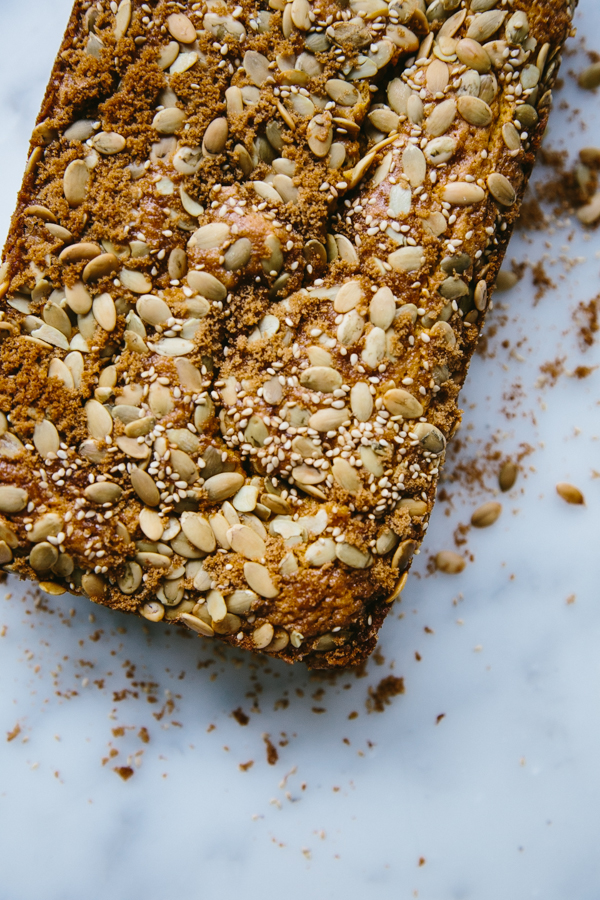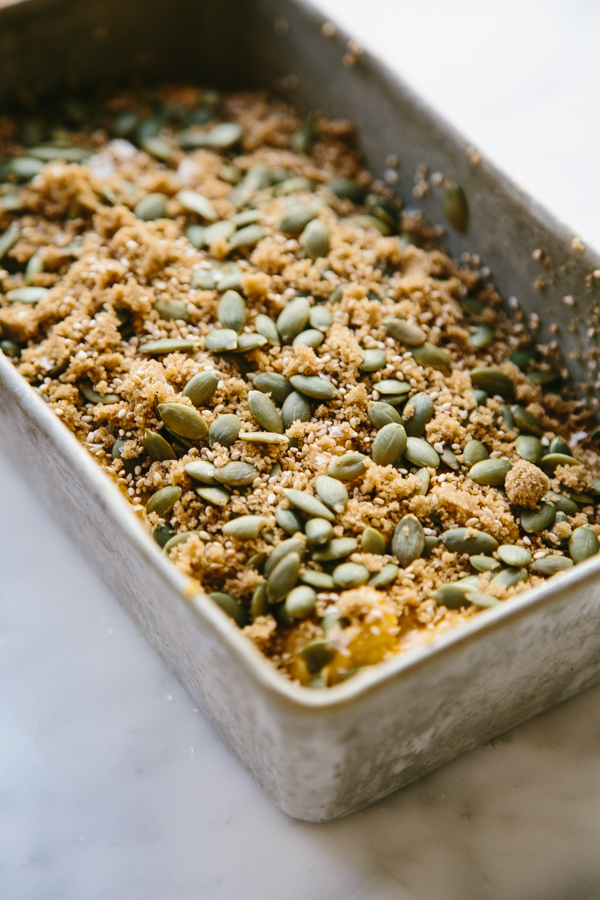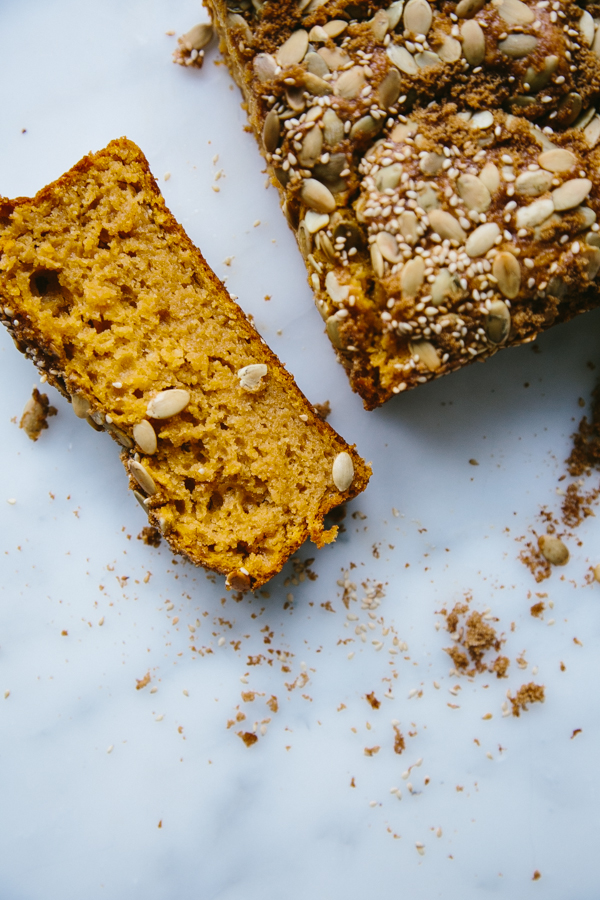Some of your favorite baked goods — from loaves and muffins to scones and pancakes — are technically considered quick breads. Essentially, a quick bread is a batter or dough leavened with chemical leaveners — that is, baking powder and/or baking soda — in lieu of yeast.

The best thing about quick breads? There’s simple recipe ratio you can use to dream up your own recipes.
The magic quick bread ratio
We’ve all heard it before — baking is a science. It’s true. Cakes, candies, laminated doughs, batters; they all have a basic formula that must be followed in order for the finished product to be a delicious success.
In the book Ratio: The Simple Codes Behind the Craft of Everyday Cooking, James Beard award–winning author Michael Rhulman teaches us the basic baking formulas so that we can have freedom in the kitchen. When you understand the basics, you can have fun with adapting the recipes to suit your taste.
For a basic quick bread use the following ratio:
2 parts flour : 2 parts liquid : 1 part egg : 1 part butter or oil
This ratio accounts for the necessary ingredients needed for a basic quick bread. But when you look at a quick bread recipe, it might not look as clear-cut as the ratio above. Here’s why:
- Leavening is assumed in baking. The leaveners are accounted for in the flour (with 4 ounces of flour to 1 teaspoon baking powder)
- Extras like spices are completely optional and therefore not counted in the ratio
- Sugar is necessary, but the amount of sugar in many recipes doesn’t necessary affect the final outcome, therefore it is not a part of the ratio. Sugar is often mixed in with the wet ingredients to prevent further gluten formation, but is not considered a wet ingredient.
Let’s break down that quick bread formula a little further
Dry Ingredients
The dry ingredients here are flour, leavening, salt and spices. You can use whichever spices you’d like or none at all. Whisk together the dry ingredients to break up any clumps in the flour and aerate the mix for a lighter loaf.
Leavening
A quick bread wouldn’t be a quick bread without baking powder. Initially, people believed that all yeast-based breads would be obsolete with baking powder on the scene. We now know that yeast still has a place in our baking pantry, but baking powder allows us some immediate lift so we can mix up a batter in a matter of minutes.
The general rule of thumb is that for every 4 ounces (scant cup) of flour you need 1 teaspoon of baking powder.
Liquids
The liquid can be in the form of a fruit or vegetable pureé, water or milk. You can also use soured milk, buttermilk, yogurt or sour cream. With the addition of an acid, you would also need to add in some baking soda in order to get the right chemical reaction to activate the leavener.
Eggs
Protein in eggs contribute structure to the quick bread while the yolks, with their high fat content, add more moisture.
Fat
The presence of fat in the recipe makes the bread moist. The liquid fat coats the flour, inhibiting gluten formation making a perfectly tender crumb.
You can use either melted butter or oil for the fat in a quick bread recipe. I prefer to use a neutral oil if I don’t use butter, but you may choose a nice grassy olive oil especially if you are making a savory quick bread.

Mixing rules
A quick bread lives up to its name by way of the chemical leaveners’ abilities to instantaneously rise and due to the ease in the mixing process.
All liquid ingredients are stirred together and then the dry ingredients are folded into the wet. In this recipe the sugar is t mixed with the rest of the wet ingredients. When the wet ingredients mix with the dry ingredients, gluten starts to form. But by dissolving the sugar in the wet ingredients, the water is tied up with the sugar and will further prevent gluten giving you a moister cake. You must also take care not to over mix to avoid a tough loaf.
Quick bread add-ins and variations
Now that we have a firm understanding of quick bread science and a solid formula, we can play around a bit with some optional ingredients. Here are a few ideas:
- You can freely mix in fruits and nuts with very little effect on the final recipe.
- In the recipe below we’ve taken out the liquid and instead replaced it with pumpkin pureé. You can do the same thing with three roughly mashed bananas for a delicious banana bread.
- Top your quick bread loaf with a simple crumble or raw sugar.
- For a savory loaf use 1/2 cup white sugar (in place of the brown sugar in the recipe below). Stir in fresh herbs, bacon or diced ham and a good bit of grated cheese. Use a bit of paprika and dried mustard powder in the dry mix.
- Bake your quick bread batter in muffin tins.
Want to try your hand at a quick bread recipe? Start with this seedy, seasonal pumpkin bread!

Seedy pumpkin loaf recipe
In the recipe below, our 2 parts dry ingredients include the flour, salt, baking powder and spices. The pumpkin pureé serves as our liquid. I’m using a neutral oil for our fat, but you could also use melted butter.
Ingredients:
- 8 ounces (2 cups) all-purpose flour
- 1 teaspoon kosher salt
- 2 teaspoons baking powder
- 1 teaspoon cinnamon
- ¼ teaspoon nutmeg
- ¼ teaspoon ground ginger
- 8 ounces (1 cup) pumpkin pureé
- 2 large eggs
- 4 ounces (½ cup) oil
- 4 ounces (1 cup) sugar
- 1/3 cup pumpkin seeds
- ¼ cup brown sugar
- 1 tablespoon sesame seeds
Directions:
- Preheat your oven to 350 F. Grease a 9-by-5 inch loaf pan.
- In a large bowl, whisk together the flour, salt, baking powder, cinnamon, nutmeg and ginger. In another large bowl, combine the pumpkin, eggs, oil and sugar.
- Add the dry ingredients to the wet until just combined.
- Pour the batter into the loaf pan. Top the loaf with the pumpkin seeds, brown sugar and sesame seeds.
- Bake for 50 – 60 minutes or until the loaf bounces back slowly when gently pressed.
- Let cool in the pan before unmolding and cooling completely on a wrack.
Wrap any leftovers in plastic wrap.


I am searching the web to understand how much egg is 1 part? As per your recipe, it seems 2 large eggs make 1 part of 2 part flour. So for 1 cup flour, it is 1 egg? but I thought "part" is the same volume. I am so confused!
This was a very useful article. Thank you!